#exterior wall primer
Text
JSW Wall Primer Exteriors, a perfect undercoat to prepare your exterior wall for an excellent paint job. This water based Primer has high bonding strength.
0 notes
Text
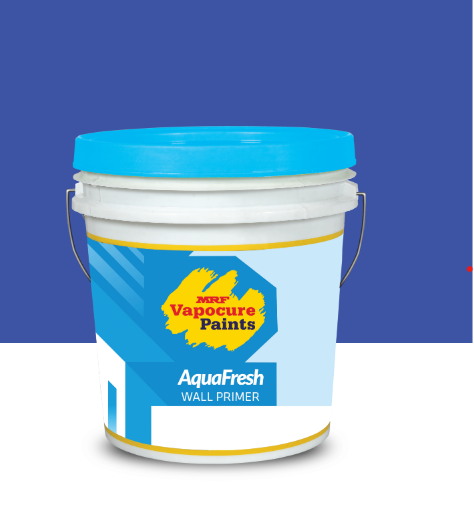
Wall Primer
0 notes
Text
Navigating the Varied Realm of Wall Putty: A Comprehensive Guide to Types and Utilizations
Wall putty, a fundamental ingredient for achieving impeccably smooth and enduring finishes on both interior and exterior surfaces, is available in an array of formulations designed to suit distinct purposes.
This blog will delve into the intricate universe of wall putty, uncovering its diverse categories, applications, and advantageous characteristics.
Also Read: Master Coat – Best Wall Putty Brand in India
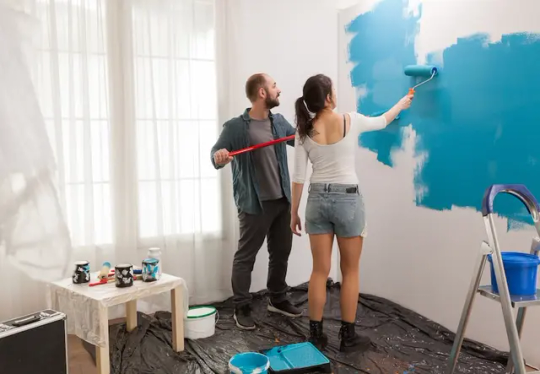
Conventional Wall Putty: Serving as a versatile choice, conventional wall putty finds its niche on interior surfaces. Its application is effortless, effectively concealing minor fissures and imperfections. It acts as an essential foundation for paints, elevating adhesion and ensuring a uniform coat.
White Cement-Based Putty: Engineered for achieving a refined and luminous veneer, white cement-based putty encompasses white cement and polymer additives. This variant is particularly well-suited for interior walls, as it repels moisture while providing an optimal canvas for paints. Its usage extends to decorative finishes as well.
Acrylic Wall Putty: Renowned for its pliability, acrylic wall putty stands as a fitting choice for both interior and exterior surfaces. It exhibits the ability to withstand slight shifts without succumbing to fractures and boasts elevated water resistance. It is notably effective in spaces characterized by high humidity, such as bathrooms and kitchens.
Gypsum-Based Putty: Crafted from gypsum powder and enriching additives, gypsum-based putty is favored for its lightweight constitution and superlative smoothness. Its common application encompasses ceilings and drywalls. However, it's essential to acknowledge that its water-soluble nature renders it unsuitable for wet areas.
Polymer-Modified Cement Putty: This category marries cement with polymers, augmenting its adhesive characteristics and pliancy. It is an excellent contender for exterior walls that contend with fluctuating weather conditions, as it showcases resilience against fissures and water infiltration.
Fast-Setting Putty: Engineered for expedited drying, fast-setting putties abbreviate the waiting period between successive layers. These variants prove particularly advantageous for projects constrained by tight timelines. Nevertheless, their successful application hinges on prompt and efficient execution.
High-Performance Putty: High-performance putties present advanced attributes like heightened adhesion, crack resistance, and even protection against mold formation. They are optimal choices for high-traffic zones, commercial establishments, and locales susceptible to dampness.
Applications:
Conventional and white cement-based putties excel at leveling surfaces and establishing a seamless undercoat.
Acrylic putties find their forte in areas marked by humidity concerns, thanks to their adeptness at repelling water.
Gypsum-based putties shine in the creation of intricate ceiling designs.
Polymer-modified putties emerge as prime contenders for exterior surfaces that confront diverse weather variations.
Benefits:
Amplified paint adhesion and finish quality.
Skillful concealment of cracks and imperfections.
Prolonged longevity of paint applications.
Heightened aesthetic appeal of walls and ceilings.
Endurance against water and longevity.
Conclusion: The realm of wall putty is a multi-faceted one, with each variant catering to distinct requisites. Whether the goal is to achieve a flawlessly curated interior or a weather-enduring exterior, the choice of wall putty wields a significant influence on the ultimate result. Gaining insight into the classifications, applications, and benefits empowers informed decisions and paves the way for attaining superlative surface finishes.
Looking For Best Wall Putty Brand in India? Visit MasterCoat- #1 Wall Putty Brand Based in Ahmedabad, India since 1997.
#distemper#exterior design#interior#interior design#interiors#manufacturing#primer#putty#reverend putty#stephanie putty#mastercoat#best wall putty manufacturer in ahmedabad#best wall putty brand in india
2 notes
·
View notes
Text
What are the uses of interior primer before paint?
When it comes to painting your home's interior, using a primer before applying paint can make a big difference in the final result. A primer is a preparatory coating that is applied to surfaces before painting to improve adhesion, enhance durability, and provide a smooth and even surface for the paint to adhere to.

Here are some of the main uses of interior primer before paint:
1. Improves Adhesion
One of the primary functions of a primer is to improve adhesion between the surface being painted and the paint itself. This is especially important when painting over surfaces that are slick or glossy, such as tile, glass, or metal. A primer creates a bond between the surface and the paint, ensuring that the paint adheres properly and doesn't peel or flake off over time.
2. Enhances Durability
Another benefit of using a primer is that it can enhance the durability of the paint job. Primers are designed to create a barrier between the surface and the paint, protecting the surface from moisture, stains, and other types of damage. This can help extend the life of the paint job and keep your walls looking fresh and new for longer.
3. Provides a Smooth and Even Surface
Using a primer can also help create a smooth and even surface for the paint to adhere to. This is especially important when painting over surfaces that are rough or uneven, such as drywall or plaster. A primer fills in any gaps or imperfections in the surface, creating a uniform base for the paint to be applied to. This can help ensure that the final result looks professional and polished.
4. Saves Time and Money
Finally, using a primer can actually save you time and money in the long run. By creating a strong and durable base for the paint, a primer can help prevent the need for multiple coats of paint. This can save you both time and money on materials, as well as reduce the amount of time you spend painting overall.
Here are some additional details to enhance the pros and cons of not using branded interior primer:
Pros
- Cost: While non-branded interior primers may be less expensive than their branded counterparts, it's important to consider the cost in relation to the quality of the product. A lower-quality primer may require more coats of paint or need to be replaced sooner, which could end up costing you more in the long run.
- Availability: Non-branded interior primers may be more widely available, but this doesn't necessarily mean they are easier to find. It's important to do your research and make sure you're choosing a primer that is specifically formulated for the surface and type of paint you plan to use.
- Flexibility: Some non-branded interior primers may be formulated for use on a variety of surfaces, which can be beneficial if you're painting multiple rooms with different types of surfaces. However, it's important to make sure the primer is compatible with the specific type of paint you plan to use.
Cons
- Quality: The quality of a primer can have a significant impact on the final result of your paint job. Non-branded interior primers may not have the same quality standards as branded products, which could result in a lower-quality paint job. A high-quality primer will provide better adhesion, coverage, and durability, resulting in a smoother and longer-lasting finish.
- Performance: Non-branded interior primers may not perform as well as branded products, leading to issues such as poor adhesion, uneven coverage, or peeling paint. A primer that is specifically formulated for the surface and type of paint you plan to use will provide better performance and ensure a successful paint job.
- Compatibility: Using a non-branded interior primer that is not compatible with the type of paint you plan to use can cause problems down the line, such as cracking, peeling, or discoloration. It's important to choose a primer that is specifically formulated for the type of paint you plan to use to ensure compatibility and a successful paint job.
- Safety: Non-branded interior primers may not meet safety standards or contain harmful chemicals that could pose a risk to your health. It's important to choose a primer that is safe for use indoors and meets all safety standards to protect yourself and your family.
0 notes
Text
High-Quality Industrial Furniture Paint & Wood Coating
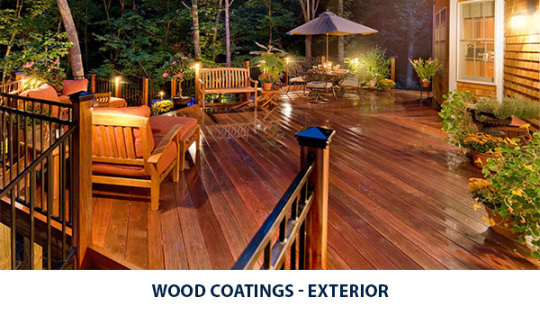
Industrial wood coating and furniture paint are essential components in the manufacturing of furniture, cabinets, and other wooden items. They provide protection against wear and tear, weathering, and corrosion. They also add aesthetic value to the wood, making it look more attractive. Industrial wood coatings come in a variety of colors and finishes, allowing manufacturers to create unique pieces that stand out from the rest. Furniture paints can also be used to enhance the look of existing furniture or create entirely new designs with a wide range of colors. Both industrial wood coating and furniture paint play an important role in creating beautiful pieces that last for years to come.
#wall paints#interior paints#exterior paints#furniture paints#house paints#best paint for interior walls#house painting services#best exterior paint#best interior paint#wood primer paint#best wood primer#water based wood primer#universal primer pcr
0 notes
Text
Do you want to know which wall paint in India is the best?
Indigo Paints provides a variety of wall paints, wood varnishes, and PU enamels for use in homes. Discover the ideal wall colour schemes for painting homes.
0 notes
Text
Your Go-To Guide to Primer Paint
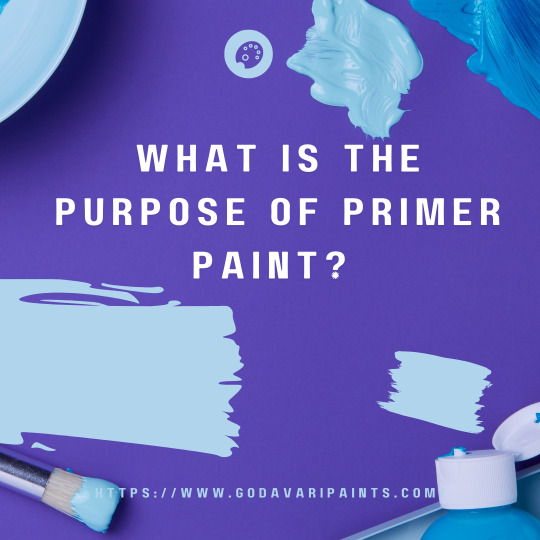
Using the right primer is of utmost importance. The choice of primer paint can make or break your project. However, not many people are well aware of what exactly it is that primer paint does, when it should be used and when not, and what type of primer is the best. Researching primer paints can help you in avoiding tons of mistakes that will result in stretching your project.
What is the purpose of Primer Paint?
First and foremost, it is important to understand what the primer actually does. Essentially, primer is used to prepare the surface in a variety of ways. When you decide to use an interior wall primer for your walls, it helps in making your paint job more long-lasting and durable. It creates adhesion that provides paint with enough strength to stick to the wall. Moreover, when walls made of porous materials such as a brick walls or drywall are first primed, the surface gets sealed. This ensures that the paint is not absorbed. Priming also helps in cutting down the amount of paint you use, especially if you are making a drastic change in the color of your walls.
Is Priming absolutely necessary?
Applying primer paint before you start painting is definitely an added layer of work. Needless to say, it makes the entire project a little more time-consuming than if you skipped the part. However, there are times when you must absolutely not skip applying primer paint. Apart from using primer when you are drastically changing the colors of your wall, it is also important to prime your wall if you plan on using oil-based paints. Moreover, if there is mildew or mold on the exterior walls of your house, then using exterior primer paint is advisable.
What are the different types of primer?
There are several different types of primer available in the market, but they can mainly be categorized into two types:
Oil-Based Primer
Oil-based primers tend to have a strong smell, and hence, it is advisable to use them in rooms that have good ventilation. These primers also take a little longer to dry. Moreover, you will have to clean your brushes with mineral spirits rather than just simple water. Though this might sound tedious, it is advisable to use an oil-based primer if you are painting a wall that had previously been painted with an oil-based paint. Even if you plan on using water-based paints ahead, you will need to use an oil-based primer. Another property of the oil-based primer is that it can easily stick to any surface whereas water-based primer can be scratched off.
2. Water-based Primer
Water-based primers should be used for painting drywall or if you are painting a room anew. Unlike oil-based primer paints, water-based primers do not have a strong smell and hence, they can be used even in closed spaces. Moreover, it dries up quickly and can easily be washed with water.
Conclusion
Both these types of primers are also available as spray primers. However, they are much more expensive than paint forms of the primer. A coat of primer goes a long way in ensuring that your paint does not peel off or turn yellow. Now you know everything there is to know about primer paints, you can make a choice and start your project.
0 notes
Link
Godavari Paints Pvt Ltd established in 1972 group has its manufacturing arm at Vadodara, Gujarat. The company boasts of more than 100 qualified, efficient & a dedicated workforce. Check the link to know more in detail.
0 notes
Note
When you quit you should make a tiktok account sharing your “pro tips from an ex paint shop worker” and share how to do the paint mixing, stain stuff you’re good at, and like tips about pretty colors to request/that go together well. And I think you once posted about people stressing about whites and the light on it FOREVER ago and I learned it only matters in certain contexts (ex. Indoor painting vs exterior of a house) basically teach us all the secrets
Oh we dont gotta wait for my official last day, unfortunately theres no industry secrets when it comes to paint- atleast not on the sales floor level. But I can give some tips and stuff
1) Light colors will pull everything around them. So waiting last minute to pick your offwhite or grey or beige is a really bad idea. You need to bring a few chips home to see how they look in your lighting, because tinted paint is not returnable and you don't want to spend 90+ dollars on something you hate in this economy.
2) there is no True Grey. All greys (and all colors really) have a warm or cool cast. Warm casts are red, orange, and gold (think fire) and cool casts are blue, green, purple (think water). Most people think of cool greys when they think of grey, but thats why its turning blue on you in some lighting.
3) general rule of thumb is artificial light has a blue cast and natural light has an orange cast. So if you buy a cool gray and its turning out too blue, try grabbing a warm grey and see how that turns out.
4) All latex paint is paint and primer in one. All that means is over a previously painted surface, you do two coats (a "primer coat" and a "finish coat".) If you're going over something like drywall its more cost effective just to get primer, cause otherwise you will have to do more than two coats because drywall is unsealed and the paint sinks in. If youre doing something like tile or cabinets- any kind of shiney surface, you need to both lightly sand and use a special bonding primer.
5) Do not use oil paint if you can help it. Its already stopped production in Cali and New York but its slowly leaving the industry and in a year when you need to touch up something youre gonna have to do a lot more than you bargained for when you cant get oil paint anymore. Just get the latex now. Paints come a long way, its fine.
6) flat for ceilings. Yes even in bathrooms. Just make sure the ceiling paint you have is anti microbial. It usually is. And on that note, buy ceiling paint. Not wall paint. Save your wallet, unless youre making some kind of grand ceiling art, no ones looking up there and you dont need anything fancy.
7) when possible, just use extra white. Thats the white straight out of the can. Itll make touch up in the future much easier if its just something you can grab off the shelf.
8) tint mixes different than paint. We can always darken colors but never lighten. Thats because white tint doesnt lighten, its a place holder. Its all additive.
9) almost all the colors on the wall, but especially all greys and beiges and whites, are made of black, maroon, and deep gold. And that formula doesnt mean what youd think it means instinctively.
10) speaking of formulas, stain matches are.... Complicated. Temper your expectations now. If you want a stain match you need to bring in a piece of wood ur matching, a scrap piece ur staining, and we need time. Its all done by eye, and even the most trained at it need time to see how the wood takes the stain. I wish i could give advice on how to make these easier but its very much a you just have to do them a long time and eventually you learn to intuit it. Just be nice to the people doing ur stain match and plan atleast three days for them to do it.
11) when you come in and say you need paint, we are going to ask four things: what color, which kind, what sheen, and what account are we putting it on. Be prepared to answer these questions.
12) when it comes to picking a color, find the whitest surface you can (most Sherman Billiams stores have to have a bright white table by the color wall), and lay your colors on there. It helps find what under tones it has. Trust YOUR eye. Everyones cones n rods n whatever are different. Youre the one who has to live there and see it every day, and the person behind the counter both doesnt care and also can not pick colors for you.
13) Sherman has sales more often than they dont. If they just came off one, wait a week. 40% sales happen, usually, four times a year (this year theres been an ungodly amount tho so like who knows). If youre in a "paint emergency" and theres no sale, there is ALWAYS a ten dollar off fifty coupon online. Most stores have it behind the counter but if the manager is particularly stingy about budget they might not be allowrd to use it so just have it on ur phone.
14) if youve caught the tail end of a sale but you havnt decided a color yet, you can buy paint untinted and bring it in to tint for free later. You can also return untinted paint if you dont use it.
Thats all i can think of atm?? But idk if u have questions feel free to ask Ill answer if i can lmao
28 notes
·
View notes
Text
We offer best quality primers for interior & exterior walls. Protect & prepare your wood & metal surfaces for the finest finish with our Halo Aquaglo primers.
0 notes
Text
Bring Your Home to Life with Professional House Painting Services
House painting services are an essential part of home maintenance, as they help to keep the exterior and interior of your home looking fresh, new and appealing. Not only does a fresh coat of paint improve the aesthetic appeal of your home, but it also protects the walls from wear and tear, moisture damage, and other environmental factors that can cause deterioration over time. If you're considering House Painting Services, here are some things to keep in mind.
First, it's important to find a reputable and experienced painting contractor. Look for a company that has a solid reputation in your community and has a history of providing high-quality services. Check their website and read reviews from past customers to get an idea of their workmanship and customer service.
Once you've found a contractor that you're interested in working with, schedule a consultation to discuss your painting needs. A professional painting contractor should be able to provide you with an estimate based on the size of your home, the type of paint you'd like to use, and any additional services you may require, such as surface preparation, primer, or sealant.
One of the most significant benefits of House Painting Work is the curb appeal it can provide to your home. If you're looking to sell your property, a fresh coat of paint can make a significant difference in attracting potential buyers. Even if you're not planning to sell, a well-maintained home can improve your property value and make you feel more comfortable and confident in your living space.
In addition to improving the appearance of your home, painting can also improve its energy efficiency. By using high-quality, reflective paint, you can reduce your energy costs by up to 40%. This is especially true in areas with extreme weather conditions, where the sun's rays can cause significant heat gain or loss.
Another benefit of house painting services is the protection it provides to your home's interior and exterior surfaces. Paint can help to prevent moisture and mold growth, which can cause health problems and structural damage over time. It can also protect against pests, such as termites and carpenter ants, which can cause extensive damage to your home's structure if left untreated.
When it comes to choosing the right paint for your home, there are many options to consider. For example, some paints are designed to be more durable and resistant to weather and environmental factors, while others are designed for specific surfaces, such as wood or metal. Your painting contractor can help you choose the right paint for your needs and budget, taking into account factors such as durability, cost, and aesthetics.
In addition to choosing the right paint, it's essential to properly prepare your surfaces before painting. This may include cleaning, sanding, and repairing any damage or imperfections. Proper preparation is critical to ensure that the paint adheres correctly and provides the best possible protection for your home.
When it comes to hiring a painting contractor, it's essential to ask for references and check their credentials. A reputable contractor should be licensed, insured, and experienced in providing high-quality painting services. They should also be able to provide you with a written contract that outlines the scope of the work, the materials to be used, and the timeline for completion.
For more information you can visit these sites also:
House Painting Service in Bangalore
Best Painting Services in Bangalore
Painting Services in Bangalore
In conclusion, Interior House Painting are an essential part of home maintenance and can provide a range of benefits, including improving curb appeal, protecting your home's interior and exterior surfaces, and improving energy efficiency. By working with a reputable and experienced painting contractor, you can ensure that your home is painted to the highest standards, providing long-lasting protection and aesthetic appeal for years to come.
2 notes
·
View notes
Text
MasterCoat - Best Wall Putty Manufacturer in Ahmedabad
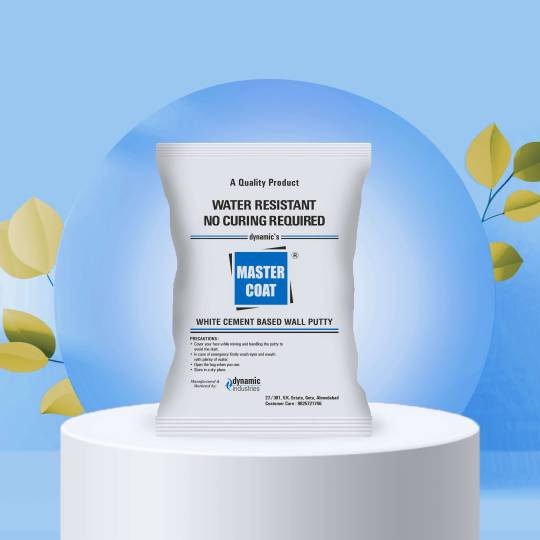
MasterCoat, established in Ahmedabad, India since 1997, stands as a premier wall putty manufacturer.
With an illustrious history of quality and innovation, they've consistently delivered premium wall putty solutions.
MasterCoat's commitment to excellence, advanced production techniques, and a diverse range of products have earned them a reputation as the best in the industry.
Trusted by professionals and homeowners alike, MasterCoat continues to set the benchmark for wall putty, ensuring flawless finishes and lasting aesthetics for every surface.
#putty#manufacturing#interior design#interior#interiors#distemper#exterior design#reverend putty#primer#stephanie putty#mastercoat#best wall putty manufacturers in ahmedabad#best wall putty brand in india#best wall putty in gujarat#white cement based wall putty
3 notes
·
View notes
Text
10 Ways to Make House Painting in Miami, Florida Easier
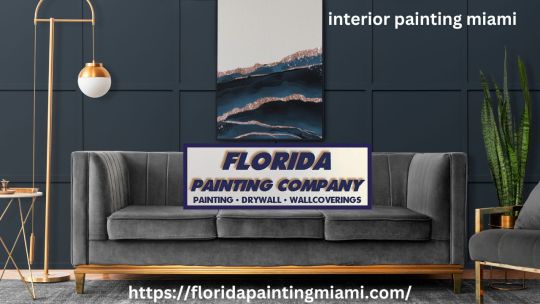
First of all start house painting miami florida reminder some rules and instructions for get best result. Many painters start without make a plan on any interior or exterior wall painting but there are also make a proper plan like move the furniture , clean selected all the wall properly , select tap and protection, apply primer up the wall. Go to the more details from here:- https://g.page/FloridaPaintingMiami?share
#Painting Miami#painting services miami#interior painting miami#drywall installation near miami fl#house painting miami florida#Commercial Painting miami#Painting Reviews#Miami Painters
2 notes
·
View notes
Text
Professional House Painting Services with Quality House Paints
Looking for reliable house painting services? We provide professional house painting services, using premium quality paints that will make your house look vibrant and new. Get in touch to get started!
Deck up your home's interiors and exteriors with wall paints by the finest makers of JNPL Decorative House Paints. Add an unmatched charm to your walls by not only beautifying your walls but offering long-term protection against extreme weather conditions.
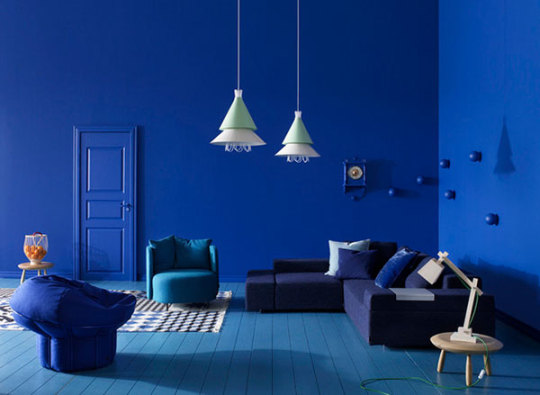
At Jenson & Nicholson Paints, we have a wide range of wall paints for both interior & exterior purposes. From exterior house paint to interior walls.
#exterior paints#furniture paints#house paints#best paint for interior walls#house painting services#best exterior paint#best interior paint#wood primer paint
0 notes
Text
Best Home Interior ideas: How to Choose Paint Finishes For Your Home
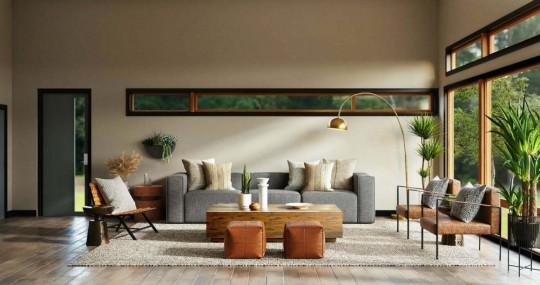
Essential Guide to Paint
Paint is your passport to color and arguably the easiest, least costly and most immediate way to transform a home. It can be as simple as brilliant white, but that would exclude all the other drop-dead gorgeous colors. Paradoxically, it’s the vast choice that often poses a problem — there are just so many brands, types and shades on the market.
Choose from historical hues for period homes; sleek chalky finishes that stand up to the rigors of modern life; or new formulas designed to suit all surfaces. By understanding the product you can unleash all the design possibilities of paint that make it such a tempting medium.
Types of Paint
Water-based paints are usually referred to as emulsions and were traditionally used only for interior walls and ceilings. But recently tremendous advances in paint technology mean that water-based formulas, especially the high-performing acrylics, are available for all surfaces, from woodwork to metal, and for interior and exterior use. The advantages of these paints over oil-based ones are that they are cleaner, have fewer odors and are more environmentally sound. Brushes can be rinsed clean with water.
Solvent or oil-based paints are used where a tough, durable finish is required for interior and exterior timber, masonry and furniture — although, as mentioned above, the new generation of acrylics and multi-surface paints offers viable alternatives. In general, brushes need to be cleaned with turpentine or white spirit.
Make-up and quality all paints are made of four key ingredients: pigments, binders, liquids and additives. Generally speaking, the more pigment used to make the paint, the better the quality it will be: a ratio of 30 to 45 per cent binder and pigments by volume indicates a paint that will be durable and provide good coverage and lasting color. Consider the following when you are faced with a wall of paint pots and are struggling with what to buy.
Pick a brand you can trust Companies with their own high-street shops, such as Fired Earth and Farrow & Ball, and those that sell through the DIY giants are the most accessible. However, buying paint online is increasingly popular and can bring you a wider choice, especially if you live outside major towns and cities.
Go for good coverage Look at the figures per liter not for the whole can; 12sq m per liter is average. Cover ability varies between brands, making the difference between needing two or three coats. You will generally find more pigment in premium paints, giving a greater depth of color.
Select the right product. There is a dedicated paint for practically every surface, including tiles and appliances, such as fridges. For high-traffic areas consider scuff-resistant multi-surface paints that can be used on both wood and walls. Kitchens and bathrooms benefit from specialist formulas designed to cope with humidity without flaking.
Try before you buy Color cards are fine for making an initial selection but you will want to see a true paint sample in situ before committing. Tester pots vary in price from £1 to £4. Paint onto a sheet of paper that you can move around the room to enable you to see the color in different light conditions. The effect varies greatly. The window wall can seem dark while the wall opposite will be flooded with light. And of course there is a dramatic difference between natural and artificial light. Finally paint a patch directly onto the wall to gauge the color, coverage and the final finish.
Specialist wall, floor and furniture paints
These days, there are paints to decorate every surface in the home, from melamine to ceramic tiles. Many of these formulas require no specialist preparation — Crown’s Cupboard Makeover Paint is available in 12 colors and does not need a primer.
There are also multi-surface paints, such as B&Q Colors Everywhere for walls, ceilings, woodwork and radiators, and Bedec MSP Multi Surface Paint, which can be used on everything from plastic to masonry. Areas such as bathrooms and kitchens benefit from durable, mildew-resistant coverings, which are available in premixed colors.
However, for the more discerning, Deluxe Kitchen & Bathroom paint can be mixed in any one of its 1,200 colors, and Farrow & Ball is launching Modern Emulsion. Designed to complement its original Estate Emulsion, the paint has a slightly higher sheen, is fully washable and available in the full color range.
Specialist paints also include some exciting new finishes, such as suede effects, metallic’s and high-sheen lacquers. Judy Smith, color consultant at Crown, suggests an accent wall in one of these to lift a neutral scheme. Crown’s Feature Wall range, which includes eight metallic finishes, nine bright colors and a highly reflective Pure Brilliant White, comes in convenient 1.25 liter tins.
If you have a timber floor that’s not particularly attractive or is made from a patchwork of old and new wood, paint makes the perfect disguise. There are plenty of choices — all the colors from Farrow & Ball are available as floor paint and Nordic decor Style offers an elegant selection, too.
Alternatively, a timber floor in good condition can be treated to a natural or tinted stain, which allows the grain to show through. Eve Johnson’s Scandinavian wood care oils will take the yellow edge off pine.
If you are grappling with the problem of choosing a woodwork color to go with neutral walls, check out Architectural Colors by David Oliver, the founder of Paint & Paper Library. He arranged his off-whites for ceilings, cornices, walls and woodwork in chromatically groups and the concept has been so well received that chromatically arranged colors, such as soft grays, greens and pinks, have been introduced.
Exterior Masonry and Woodwork Paints
Specialist masonry and exterior woodwork paints are now available in many of the sophisticated colors offered for interiors. For example, the new Weather shield range of satin and gloss exterior paints from deluxe features innovative shades such as Wild Berries and Wild Roses.
When choosing colors for exterior surfaces, consider the style of the brickwork or masonry of your home along with the colors used on nearby buildings, so as to pick colors that are sympathetic to these surroundings. Colors for fences and sheds should be selected with the same criteria in mind.
Technical advancements are constantly being made to improve the life span, durability, wear and performance of exterior paints. Masonry paints come in a wide variety of finishes, from textured to ultra-smooth. Opt for a texture if you need to disguise fine surface cracks. If you favor traditional finishes, then consider lime wash, which is available from specialists such as Francesca’s LimeWash. The beauty of this paint is that it will mellow and weather with time. However, do check with the supplier first to ensure that the surface is suitable for this finish.
Traditional Paints
Available from specialists such as Farrow & Ball and The Real Paint & Varnish Company, lime wash and distemper paints can be useful for restoration projects, although some of the contents are potentially hazardous and can irritate eyes and skin. Use the modern equivalents where possible, as these are usually safer and more effective.
Cutting Down on Paint Chemicals
Everyone knows the nasty smell of paint drying — worse with oil-based paints, but also noticeable with vinyl emulsions. This is caused by paint solvents containing VOCs. They are proven health risks, and can cause allergies, headaches and breathing problems and irritate eyes, nose and throat. They are also an environmental hazard.
Following a European directive, the British paint industry has reduced VOCs in two stages, the second of which came into force in January last year.
Five categories are used to describe VOC content. For guidance, a minimal VOC content is up to 0.29 per cent, whereas a very high VOC content is above 50 per cent. All brands have, where necessary, reformulated their ranges to give minimal VOC content.
There is still no standard labeling scheme for paint. The blue globe label, pioneered by B&Q, led to VOC reduction on the mass market and has been adopted by other brands, while the European Ecolabel, recognised in 15 EU member states, looks like a flower and appears on brands such as Earthborn. Germany also has a Blue Angel label and there is a green Nordic style interior design Swan as well. You will find more detailed information on most of the paint company’s websites, as well as a wealth of practical and design advice.
Ecological Paint
The “organic” paint brands, such as Ecos, which emerged in the late 1980s, heralded a new era of odorless paints, free of solvents and VOCs (volatile organic compounds) and paved the way for other companies’ environmentally safe formulas. Following European legislation, the first stage in lowering the solvent content in paints and varnishes is set to come into force in 2007.
Traditionally, the solvents or VOCs and other chemicals used to make paints easier to apply give off toxic fumes that seep into the atmosphere for years after application. Paints with reduced or no VOCs are healthier for decorators and the people whose homes are painted with them.
The leading brands now flag up paints with lower VOCs and produce paints that are virtually odor-free — the Breatheasy range by Crown is one example. Most leading brands now produce high-quality water-based acrylic paints which outperform the older technologies of vinyl and oils.
Today, it is increasingly easy to source ecologically sound paints, as most specialist ranges, such as Ecos, Earthborn, Georgina Barrow and Auro are available via mail order. There is a wealth of color options in these pre-mixed ranges that include lush shades and muted palettes, reflecting their natural ingredients. Ecos continues to lead the field. It has recently developed Atmosphere Purifying Paint, which absorbs and neutralizes volatile chemicals, solvents and VOCs from the atmosphere in a home.
Get Expert Paint Colour Advice
Thousands of shades may offer unparalleled choice, but of course it can be harder to pinpoint the right one for you. Dulux has responded with the Tailor Made range, which offers an easy-to-use color-scheming chart that works with the 1,200 shades available to mix in-store.
Paint & Paper Library arranges its colors in five shades from light to dark to help select coordinating colors for ceilings, cornices, walls, doors and woodwork. If you are decorating around bold furnishings, such as a sofa or curtains, look at paint colors from the same fabric house as they are most likely to be sympathetic.
Malabar and Designers Guild offer some striking brights while the new Shades of Sanderson comprises 120 colors tailored to Sanderson’s collections. If you are aiming for a more subtle backdrop that will flow through several rooms, it’s wise to stick to neutral shades including Nordic style living room. Kevin McCloud’s Elements of Color for Fired Earth works especially well with our cool, northern light.
Paint Glossary
Distemper — A traditional water-based paint made from animal and natural resins, which dries to a velvety matt finish. Primarily used on ceilings and plaster moldings, and to give furniture an aged effect, but not suitable for areas of high wear. Available to order from specialist companies.
Eggshell — Traditionally refers to an oil-based paint with a silky finish, suitable for interior walls and woodwork. Water-based alternatives are now available.
Flat or Dead-Flat Oil — Provides a completely flat, oil-based finish. Generally used on walls but not suitable for areas of high wear.
Gloss — These paints have a high sheen level and are usually used on woodwork.
Limewash — Made from slaked lime and water, this paint is good for porous surfaces such as brickwork, render and plaster and gives a chalky finish. It is available from specialist companies.
Matt — Describes paints that give a flat, non-reflective finish. It is ideal for walls and ceilings that are not perfectly smooth.
Satin or silk — Water-based vinyl or acrylic paint for walls in high-wear areas, such as hallways and kitchens. A satin finish will be slightly shinier than silk.
Satinwood or semi-gloss — These paints are commonly used on woodwork, such as skirting boards. This sheen level is between eggshell and gloss.
You can find more information on paint and paint finishes and interior design ideas at Home Interior ideas.
2 notes
·
View notes
Text
PAINTING EXTERIOR MURALS
SURFACE CONSIDERATIONS
Careful selection of surface for mural work should be done first. The ideal situation would allow the artist to work on a smooth surface.
If the mural is not an existing structure, but will be constructed specifically for your artwork, carefully consider the choice of building materials to be painted. For 3D Buddha Wallpaper , there are many plywood grades available. MDO plywood (Medium Density Overlay), often referred to as "sign painters board", is a high-quality plywood that is made to be used outdoors. It could also be attached to a wooden, metal or brick wall before painting a mural. This would offer the artist a surface that is clean, smooth and can be painted indoors in the studio, rather than on a scaffold at the mural site.
SURFACE PREPARATION
Painting an Existing Surface
If factors dictate painting directly onto a pre-existing surface, preparation is a major factor in the longevity of the mural.
Surface Cleaning Considerations
The artist must be concerned with the nature of the surface to be painted. If the surface is already painted, then consider what kind of paint it is and its physical condition (the artist should realize that any surface that still has the previous coating on it will not be as permanent as one that has been completely stripped and freshly coated). If the paint is a water-based polymer, chances are good that the GOLDEN paints will adhere sufficiently. If it is a high gloss oil paint (or of unknown materials), then it must be abraded (or removed) for good adhesion. If the existing paint film is deteriorating, then it is best to have it removed (sandblasted, power-washed, scraped, etc. ). It is critical to wash any painted surface, even a newly painted surface, with soap and water prior to application of acrylic products. India Wallpaper Wall Mural that as much as 80% of all coatings failure can be directly related to insufficient surface preparation.
Previously painted high gloss surfaces can be cleaned and dulled in one step by using a household abrasive cleaner. Wash off completely with clean water.
Mold and Mildew
Mold and mildew must be removed by hand scrubbing with a mixture of 1 part household bleach to 3 parts water. CAUTION: Never add ammonia or ammonia-based cleaners to bleach! Wear goggles and protective equipment while cleaning. After scrubbing with Modern Home Wall Decoration , allow the solution to sit on the surface for 10 minutes before thoroughly rinsing off with clean water.
Cracks and Grooves
If there are cracks and grooves in the substrate, the method for filling and smoothing these gaps will depend on the nature of the substrate itself. Artists should consult an area architectural coatings store for recommendations on the best product available.
Priming the Surface
Once the surface has been cleaned, a primer coat will give better adhesion for the paint.
One key feature to look for in a primer is whether or not it can be painted over by latex (waterborne) paints. This should ensure that the primer will be a compatible surface for the adhesion of GOLDEN waterborne acrylics.

To determine the best primer1 for a specific surface, we suggest artists contact a local supplier of architectural coatings. Such companies have extensive experience with priming the broad spectrum of building supplies, and typically have specific primers for the surface the mural is to be painted on. Meditating Buddha Wallpaper will also take the environmental concerns of the area into account. We have found that architectural and maintenance paints are competitively priced, meaning that a product that costs more than a similar product will typically perform better as well.
When painting on Nature Wallpaper , concrete, or other masonry surfaces, it is recommended to also use a Masonry Conditioner that can be purchased from a commercial coatings supplier.
PAINTING MATERIALS
Acrylics are some of the most durable paints for exterior application.
Acrylics are some of the most durable and accessible paints for exterior application, used by many artists for painting murals due to their lightfastness and weather resistance. They also form an excellent bond to masonry or cementous surfaces. 3D Buddha Mural Wallpaper are a poor choice for painting on these surfaces since the alkalinity of concrete can destroy alkyd or oil products. Ethyl-Silicate paints form an excellent and permanent bond with brick or concrete; however, this system can be time-consuming and costly, and good working knowledge of the system is required as well. Solvent-based enamels are a good choice for durability, but manufacturer's pigment considerations are usually not the same as with a high-quality artist's acrylic paint.
Trending Nature wallpaper produces several lines of paint that can be used for mural work.
Gessoes, Molding Pastes, Matte Paints and Matte Varnishes are not recommended for exterior use.
Transparent or translucent gels or textured gels, should only be used in an exterior setting when mixed with acrylic paint.
GOLDEN Heavy Body, MSA, Fluid and High Flow Acrylics can all be used for mural work. Selecting which type of paint to use is dependent on each artist"s style and the surface to be painted. The artist must determine if the texture will influence the way he or she paints. For example, if painting on brick, it will be tough to get a smooth line brushed on with the Heavy Body Colors as is. They need to be thinned with GAC 200 (which also increases film hardness and potential durability) or the artist may consider switching to the Fluid Colors. The thinner consistency will allow the paint to flow into the crevices of the brick. (Refer to the chart below for selecting a suitable paint line).
#Wall Sticker for Home Decor#Living Room#Bedroom#Hall#Kids Room#Play Room#Watercolor Chinoiserie Nature Wallpaper#Traditional Non woven or Removable Peel Stick Wallpaper#Papier Peint Tapete
2 notes
·
View notes